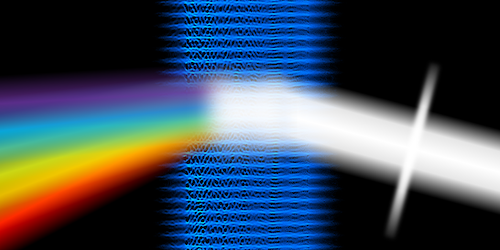Plasma Gratings for High-Power Lasers
“Petawatt” lasers emit pulses whose power—for an instant—vastly exceeds the average power of the entire US electric grid. Such powerful pulses can be used to accelerate particles, create antimatter jets, and generate x-ray beams. Pulse damage of the optical components used in these lasers, however, limits the highest achievable power and makes these systems extremely bulky—the laser beams must have large widths to prevent damage. Now Matthew Edwards of Stanford University and Pierre Michel of Lawrence Livermore National Laboratory, California, theorize that high-power lasers could be built using optics made of plasma, which can withstand much-higher-intensity beams than conventional materials [1].
Today, plasma optics, such as mirrors, are commonly used at petawatt laser facilities. But researchers have yet to demonstrate other components key to engineering a short-pulse plasma laser, including plasma gratings. Such gratings could substitute the solid gratings currently used to compress laser pulses and boost their peak power to petawatt levels.
Combining analytical calculations and numerical simulations, Edwards and Michel show that a plasma grating could be created by shining low-power lasers onto a plasma to induce a small, periodic modulation in the plasma’s refractive index. The predictions indicate that such a grating would have a damage threshold over 10,000 times higher than that of a conventional grating. It could also enable the building of lasers with 100 times more power than current systems but with the same size.
Working with another team, Edwards and Michel are already running experimental tests that suggest that plasma gratings with the required parameters can be built. “We are hopeful that these results will soon lead to a proof-of-principle demonstration of an all-plasma laser design,” Edwards says.
–Matteo Rini
Matteo Rini is the Editor of Physics Magazine.
References
- M. R. Edwards and P. Michel, “Plasma transmission gratings for compression of high-intensity laser pulses,” Phys. Rev. Applied 18, 024026 (2022).




